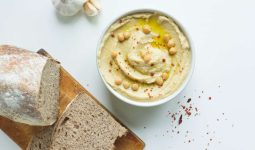Before we dive into the calorie count of a delicious Eggs Benedict, let’s first discuss what calories are and why they’re important.
What are Calories, and Why Do They Matter
When you hear the term “calorie,” it refers to the energy you get from the food and drinks you consume.
But calories are units of energy. They fuel your body, powering everything you do, from breathing to running a marathon.
Understanding calories is crucial if you’re paying attention to your diet, whether you’re looking to lose weight, maintain it, or even gain some.
It’s all about balance – consuming too many calories without burning them off through physical activity can lead to weight gain.
On the other hand, consuming fewer calories than you burn can lead to weight loss.
For more details about calorie counting, you might find our article on what is calorie counting insightful.
How Calories Are Calculated?
Wondering how the number of calories in your food is determined? It’s all about the macronutrients – proteins, carbohydrates, and fats.
Each gram of protein and carbohydrate contains about 4 calories, while a gram of fat has around 9 calories. That’s why foods high in fat are also high in calories.
Here’s a simple table to illustrate:
| Macronutrient | Calories per Gram |
|---|---|
| Protein | 4 |
| Carbohydrates | 4 |
| Fats | 9 |
When you see the calorie count on a food label, it’s calculated by adding up the calories provided by the macronutrients.
This gives you an idea of how many calories you’re getting from each serving of the food or drink.
Now that you have a better understanding of calories, you’re ready to uncover the mystery of how many calories in Eggs Benedict. Let’s get cracking!
Decoding Eggs Benedict
Dive into the world of a classic breakfast dish, the Eggs Benedict.
Understanding what goes into an Eggs Benedict and its variations will help you figure out just how many calories are tucked into this delicious dish.
What Goes into a Classic Eggs Benedict
When you’re looking at a plate of classic Eggs Benedict, you’re seeing a compilation of several ingredients layered together.
It starts with a base of a halved English muffin, followed by a layer of Canadian bacon.
Then, you’ll find a perfectly poached egg, all topped off with decadently rich hollandaise sauce.
Let’s break this down:
- English Muffin: A type of bread that serves as the base of the dish.
- Canadian Bacon: A lean, back bacon that adds a savory element.
- Poached Eggs: Eggs cooked gently in simmering water; the yolk remains runny.
- Hollandaise Sauce: A creamy, tangy sauce made from egg yolk, melted butter, and lemon juice.
Each of these ingredients contributes to the overall calorie count of an Eggs Benedict, which we’ll detail in a later section.
Variations of Eggs Benedict
While the classic Eggs Benedict is a staple, there are many variations of this dish that you might encounter.
Each variation substitutes one or more components of the classic recipe, which can affect the overall calorie count.
Here are a few popular variations:
- Florentine Benedict: This version swaps the Canadian bacon with fresh spinach, adding a pop of color and a dose of greens.
- California Benedict: A fresh take on the classic, this Benedict replaces the bacon with slices of ripe avocado.
- Smoked Salmon Benedict: Often called Eggs Royale, this version uses smoked salmon instead of bacon for a seafood twist.
Each of these variations not only offers a change of flavor but may also impact the number of calories in your Eggs Benedict.
As you dive into the world of calorie counting, remember that every substitution or addition you make can change the nutritional profile of your dish.
To learn more about the world of calories and why they matter, check out our article on what is calorie counting.
Unraveling the Calorie Count of Eggs Benedict
To understand how many calories are in Eggs Benedict, it’s important to break down the dish into its key components: the English muffin, Canadian bacon, poached eggs, and hollandaise sauce.
Breaking Down the Ingredients
English Muffin
A standard English muffin contributes around 130-140 calories to your plate of Eggs Benedict.
This calorie count can fluctuate depending on the size and brand of the muffin, so it’s always a good idea to check the nutritional information if you’re counting calories.
Canadian Bacon
Canadian bacon, also known as back bacon, is the meat of choice in a classic Eggs Benedict.
A standard serving (about 3 slices) contains around 70-100 calories. This lean cut of pork is a healthier alternative to regular bacon, providing fewer calories and less fat.
Poached Eggs
A poached egg is a key ingredient in Eggs Benedict and contains around 70 calories.
Eggs are a great source of protein and essential vitamins and minerals, making them a nutritious addition to your meal.
Hollandaise Sauce
The rich and creamy hollandaise sauce is what sets Eggs Benedict apart from other breakfast dishes.
However, it’s also the most calorie-dense component of the dish, with around 160-180 calories per serving.
Total Calorie Count of Eggs Benedict
Adding up the calories from each component, a standard serving of Eggs Benedict has approximately 430-490 calories.
This calorie count can vary greatly depending on portion sizes and the specific ingredients used.
| Ingredient | Calories |
|---|---|
| English Muffin | 130-140 |
| Canadian Bacon | 70-100 |
| Poached Eggs | 70 |
| Hollandaise Sauce | 160-180 |
| Total | 430-490 |
As you can see, Eggs Benedict, while delicious, is relatively high in calories.
This isn’t necessarily a bad thing, but it’s important to keep this in mind if you’re trying to maintain a balanced diet or if you’re counting calories.
It’s all about understanding the nutritional content of your food and making informed choices that align with your dietary goals.
For more information on calorie counting, check out our article on what is calorie counting.
Alterations for a Healthier Eggs Benedict
If you’re wondering how many calories in eggs benedict, you should know that the classic recipe can be quite heavy.
But don’t worry; there are several ways to create a lighter version of Eggs Benedict without sacrificing the taste. Here are some alterations you might want to consider.
Opt for Whole Grain English Muffins
The first alteration you can make is to switch out the regular English muffin with a whole-grain version.
Whole-grain English muffins are healthier because they provide more fiber and fewer empty calories.
This helps to keep you full longer and can contribute to better digestive health.
| English Muffin Type | Calories |
|---|---|
| Regular | 130 |
| Whole Grain | 120 |
Choose Leaner Meats
Next, consider substituting the traditional Canadian bacon with leaner meat options.
Turkey bacon or a thin slice of lean chicken breast could be good alternatives.
Both options are lower in fat and calories compared to Canadian bacon.
| Meat Type | Calories |
|---|---|
| Canadian Bacon | 43 |
| Turkey Bacon | 35 |
| Chicken Breast | 30 |
Use Lighter Hollandaise Sauce Options
Finally, the Hollandaise sauce is the main culprit in adding a significant number of calories to Eggs Benedict.
You can opt for a lighter version of the sauce for a healthier alternative.
You could use Greek yogurt or a light butter substitute to create a sauce that’s just as creamy but with fewer calories.
| Sauce Type | Calories |
|---|---|
| Hollandaise Sauce | 160 |
| Light Hollandaise Sauce | 70 |
By making these alterations, you can enjoy a delicious serving of Eggs Benedict without worrying too much about its calorie count. Remember, it’s all about balance and portion control.
You can always refer to our article on what is calorie counting if you need more information on managing your calorie intake effectively.
Tips for Calorie Counting
Counting calories is a practical approach to maintaining a balanced diet.
As you’ve seen in the case of a dish like Eggs Benedict, the calorie count can add up with each ingredient.
However, the art of calorie counting isn’t just about knowing how many calories are in your meals.
It also involves understanding portion control, considering other nutritional values, and finding balance in your diet.
Importance of Portion Control
Portion control is key when you’re keeping track of your calorie intake.
While it’s vital to know the calorie content of foods, it’s equally important to understand that serving size can significantly impact your calorie count.
For instance, the calorie content in a single Eggs Benedict serving differs from that of two servings.
Being mindful of your portions can help you enjoy your favorite meals without exceeding your daily calorie limit.
For more on portion control, check out our article on what is calorie counting.
Considering Other Nutritional Values
While calories provide a clear numerical value to track your food intake, they don’t tell the whole story.
It’s essential to consider other nutritional values of your meals, such as the amount of protein, fats, carbohydrates, vitamins, and minerals they contain.
For example, the Hollandaise sauce in Eggs Benedict can be high in fats, but the eggs offer a good source of protein.
By considering these additional nutritional values, you can make more informed decisions about your diet.
Balancing Your Diet with Eggs Benedict
With the knowledge of how many calories in Eggs Benedict, you might wonder how to fit this dish into a balanced diet. The key is variety and moderation.
Eggs Benedict can be a part of your diet provided it’s balanced with other nutrient-rich, low-calorie foods.
For instance, you could pair your Eggs Benedict with a side of fresh fruits or a green salad.
Also, consider the time of day and your activity level. If you’re planning a workout, a high-calorie meal like Eggs Benedict can provide the energy you need.
In the end, calorie counting is a tool to help you understand your food intake better. It’s not about restriction but about making informed choices.
Whether you’re enjoying Eggs Benedict or any other dish, remember to savor your meals and listen to your body’s needs. Happy counting and bon appétit!








